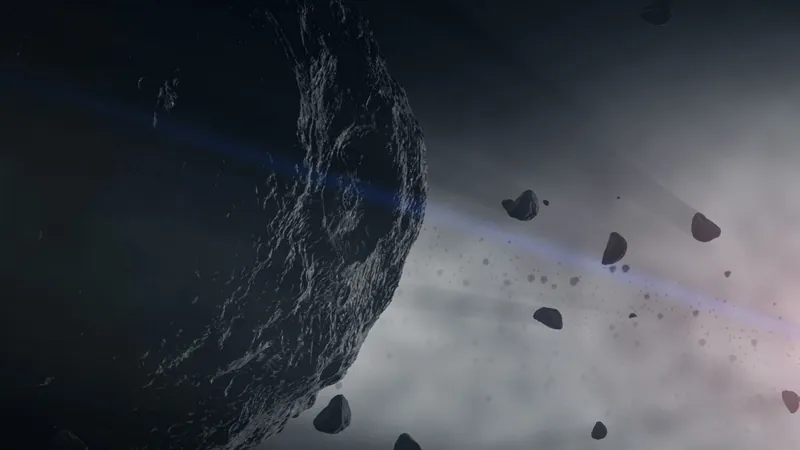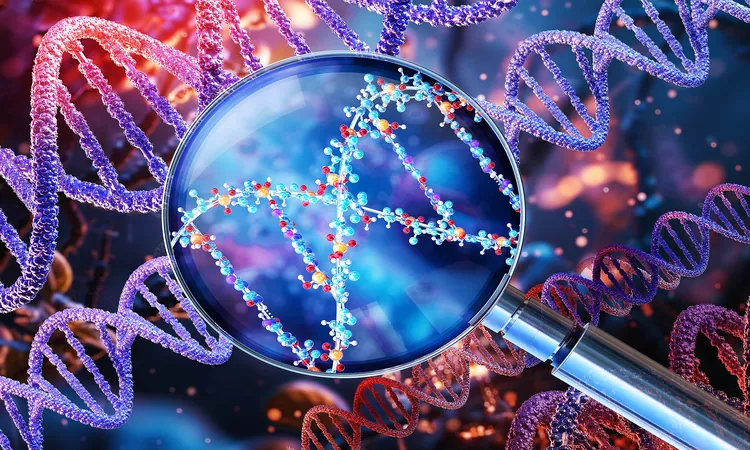
Are Asteroids the Key to Safe and Efficient Mars Travel?
2024-10-28
Author: Ming
Introduction
In a groundbreaking study from researchers at the National University of Kyiv, a remarkable hypothesis has emerged that could redefine interplanetary travel: astronauts could potentially hitch a ride on asteroids to journey between Earth and Mars. This innovative concept addresses two critical challenges of space exploration—sustaining human life and protecting astronauts from harmful radiation.
The Promise of Mars
The allure of Mars as the next destination for human exploration is undeniable, with its average distance from Earth spanning a staggering 225 million kilometers. A round trip to the red planet could keep astronauts away from home for almost three years, presenting serious health risks. These risks stem from prolonged exposure to microgravity and cosmic radiation, which can lead to muscle atrophy, bone density loss, cardiovascular problems, and an increased risk of cancer.
Research Findings
In their detailed analysis, lead researchers A. S. Kasianchuk and V.M. Reshetnyk investigated over 35,000 near-Earth asteroids (NEOs) to assess their potential in providing a 'ferry service’ between Earth, Mars, and Venus. Their findings, which cover orbital patterns from 2020 to 2120, identified 120 candidate asteroids that could facilitate faster interplanetary travel—possibly reducing the journey time to just 180 days.
Feasibility of Asteroid Transport
But could this asteroid-based transport system really work? The idea is enticing: instead of developing massive rockets, we might leverage the natural paths of NEOs to create a more efficient and cost-effective travel method. However, challenges remain, especially regarding radiation protection. The researchers emphasize that while utilizing asteroids could shorten the journey time, effective technological solutions are necessary to shield astronauts from dangerous cosmic rays.
NASA's NEO Surveyor Mission
Moreover, the study highlights NASA's NEO Surveyor mission, which aims to identify over 90% of NEOs larger than 140 meters in diameter. This initiative will significantly bolster the list of potential candidates for future missions and improve our understanding of these celestial bodies.
Potential Bases for Astronauts
Interestingly, asteroids might serve dual purposes: not only as transport vessels but also as potential bases for astronauts. If a spacecraft can take shelter in caves or under the asteroid’s surface, it could provide vital radiation shielding, further enhancing the safety of interplanetary travel.
Conclusion
As the exploration of Mars looms closer, the intersection of aerospace technology and natural celestial bodies presents an exhilarating solution to age-old problems. With continuous advancements and discoveries in space research, the dream of using asteroids as shuttles between planets could one day become a thrilling reality. The countdown to the next era of space exploration may have officially begun—will you be ready for the journey?


 Brasil (PT)
Brasil (PT)
 Canada (EN)
Canada (EN)
 Chile (ES)
Chile (ES)
 España (ES)
España (ES)
 France (FR)
France (FR)
 Hong Kong (EN)
Hong Kong (EN)
 Italia (IT)
Italia (IT)
 日本 (JA)
日本 (JA)
 Magyarország (HU)
Magyarország (HU)
 Norge (NO)
Norge (NO)
 Polska (PL)
Polska (PL)
 Schweiz (DE)
Schweiz (DE)
 Singapore (EN)
Singapore (EN)
 Sverige (SV)
Sverige (SV)
 Suomi (FI)
Suomi (FI)
 Türkiye (TR)
Türkiye (TR)